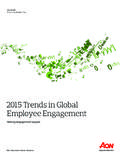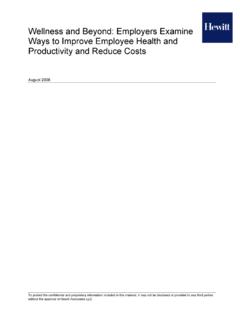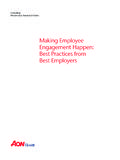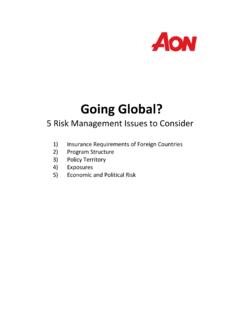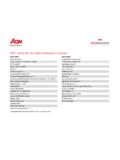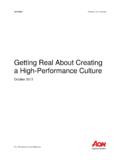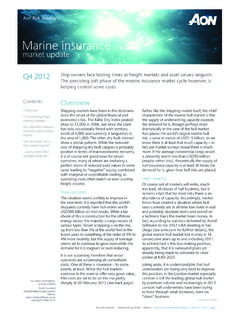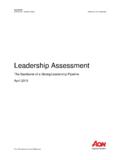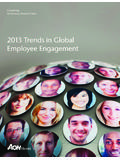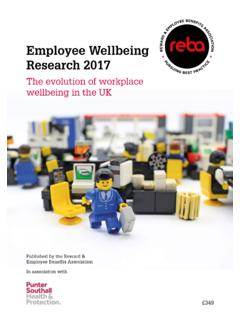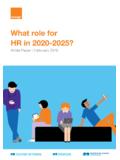Transcription of Trends in Global Employee Engagement - Health | …
1 Consulting Talent & Organization Trends in Global Employee Engagement Trends in Global Employee Engagement Contents 3 Executive Summary 4 Trends in Global Employee Engagement 5 Employee Engagement Shift in Repeat Clients 6 Correlation Between Employee Engagement and Total Shareholder Returns 7 Aon Hewitt's Engagement Model 8 Changes in Employee Perception Scores 9 What Engagement Drivers Motivate Employees? 10 Regional Analysis 14 Conclusion 15 Contact Information Executive Summary As the economy is starting to show signs of a recovery, employers may believe they will be able to revert back to tried-and-true practices to recruit, retain, and reward talent in 2011. However, Aon Hewitt experts warn that aspects of the current economic cycle are fundamentally different from previous cycles and that most companies will never truly get back to business as usual.
2 In 2011, employers will be challenged to attract and retain critical talent to grow their businesses, while at the same time they will continue to face enormous pressure to hold down costs. Adding to the challenge, Employee Engagement is already at an all-time low. Our Global Employee Engagement research from 2008 to 2010 represents million employees working in over 2,900. organizations. The overall Global average Employee Engagement score dropped to 56% in 2010 from 60% the previous year. In fact, 2010 Engagement levels represented the largest decline in Employee Engagement research that Aon Hewitt has seen in the last 15 years. However, the last quarter of 2010 shows evidence that Engagement scores are recovering. This suggests the declining Engagement levels seen across the first three quarters of 2010 are changing.
3 This paper presents overall Global Employee Engagement Trends , what aspects of a company's processes or policies help motivate employees, what has changed in Employee Engagement in the past three years, and how organizations are adjusting to the changing needs of the 21st century workforce. As another year begins, organizations will continue to be challenged. The economy is showing signs of recovery, which will create more opportunities for both employers and employees. Fortunately, by examining Employee Engagement data, we can provide employers a road map and have them focus their efforts on the top drivers that motivate employees. Employers can set themselves up for continued success by focusing on the key Engagement drivers that make a positive impact on their workforces and thus keep their employees engaged.
4 The companies that have a highly engaged workforce have risen to the challenge of maintaining and improving Engagement levels. They proactively respond to the environment, competition, and changing workforce needs. They evolve, but stay true to the values that made them successful, and are well positioned for continued success in the future. Overall Findings n Aon Hewitt's Global Engagement research from 2008 to 2010 includes million employees and represents more than 2,900 organizations n The overall Global average Employee Engagement score is 56% in 2010, down from 60% in 2009. n The 4 percentage-point change is due to regional score changes in Asia-Pacific, Europe, and North America n Top 3 Engagement drivers are career opportunities, brand alignment, and recognition Trends in Global Employee Engagement 3.
5 Trends in Global Employee Engagement Over the past decade, and particularly in the past three years, employers and employees have faced human capital challenges and an uncertain economy. The economic downturn that started in 2008 has had a significant impact on companies and the resulting decisions made by management. These decisions have impacted Employee Engagement levels and perceptions globally, leading to changes in leading drivers of Employee Engagement . In uncertain times, organizations need to focus on harnessing the discretionary effort that engaged employees deliver. This makes the difference in how companies are affected during the economic downturn, how quickly they emerge from it, and how strong they are in the future after the downturn passes.
6 This chart shows the overall Trends in Engagement scores, globally and for each region. In 2010, the Global Engagement score was 56%, down four percentage points from 60% in 2009. The reason for this decline is primarily due to changes in the regional scores of Asia-Pacific, Europe, and North America. The regional Engagement scores in Asia-Pacific, Europe, and North America mirror the Global decline. However, the Employee Engagement scores in Latin America have stayed consistent over this time period. At the industry level, the financial sector is the main sector across all regions that attributed to this fall from 2009 to 2010. Global Engagement Trends 4 Aon Hewitt Employee Engagement Shift in Repeat Clients Aon Hewitt has analyzed Engagement data for organizations who have conducted a survey in 2010 and compared that data to its historical findings.
7 Global Employee Engagement levels were improving from 2008 to 2009, but organizations struggled to maintain this trend into 2010. In fact, 2010 Engagement levels represented the largest decline in Employee Engagement research that Aon Hewitt has seen in the last 15 years. However, there is evidence that a recovery has started. As the chart shows, in the last quarter of 2010 there was a positive increase in Employee Engagement scores from the negative Trends across the first three quarters of 2010. Clearly, in the past few years, the connection between employees and organizations has been strained. Employees are showing fatigue in response to the lengthy period of stress, uncertainty, and confusion. Organizations are also exhausted and struggling to find ways to improve or stabilize their future.
8 The change can be attributed to the economic climate;. however, there are organizations that continue to improve Engagement and create success during these challenging times. Percent of Organizations With an Increase or Decrease in Engagement Trends in Global Employee Engagement 5. Correlation Between Employee Engagement and Total Shareholder Returns The organizations that improve Engagement during challenging times focus on a number of factors that differentiate them in the marketplace. These factors include focusing on long-term strategies, demanding measurable actions, involving all stakeholders, understanding key Employee segments, and broadening the range of assessment tools and analytics. Employee expectations and company responsiveness to internal and external environmental changes ( , market sentiment) have a lot to do with showing improvements, even when the market overall is showing a decline.
9 Aon Hewitt's research continues to show a strong correlation between Employee Engagement and financial performance, even in turbulent financial times. Organizations with high levels of Engagement (65% or greater) continue to outperform the total stock market index and posted total shareholder returns 22% higher than average in 2010. On the other hand, companies with low Engagement (45% or less) had a total shareholder return that was 28% lower than the average. In addition, Aon Hewitt's Global Best Employer research reveals how organizations differentiate and achieve a competitive advantage through their people. The benefits of being a Best Employer are well documented, from improved retention to increased productivity. Best Employers are distinguished by high levels of Employee Engagement , which results in lower turnover, larger talent pools, and better financial performance.
10 Global Engage-O-Meter 6 Aon Hewitt Aon Hewitt's Engagement Model Aon Hewitt's Employee Engagement research represents a variety of companies, industries, and geographic regions throughout countries in Asia-Pacific, Europe, Latin America, and North America. Understanding how engaged your people are is of little value without knowing what actions will be most effective in increasing their Engagement . This is a critical part of Aon Hewitt's Engagement Model. Our research has shown that there are typically 21 areas, shown in the following diagram, known as Engagement Drivers, that can potentially drive people's Engagement . The Engagement Model goes beyond measuring people's satisfaction with each of these drivers. The model prioritizes the areas for improvement based on their potential impact on Engagement and, therefore, business performance.
